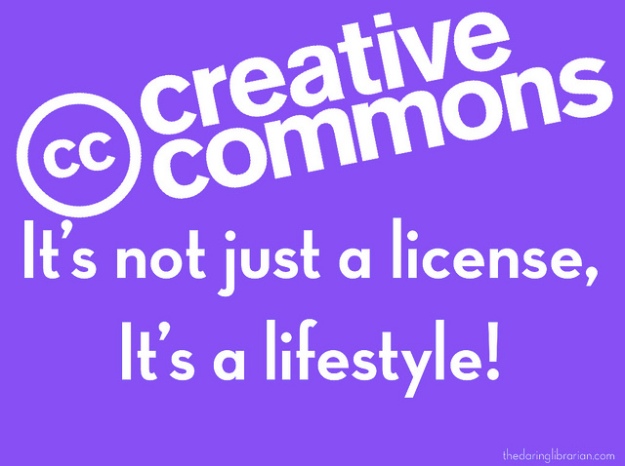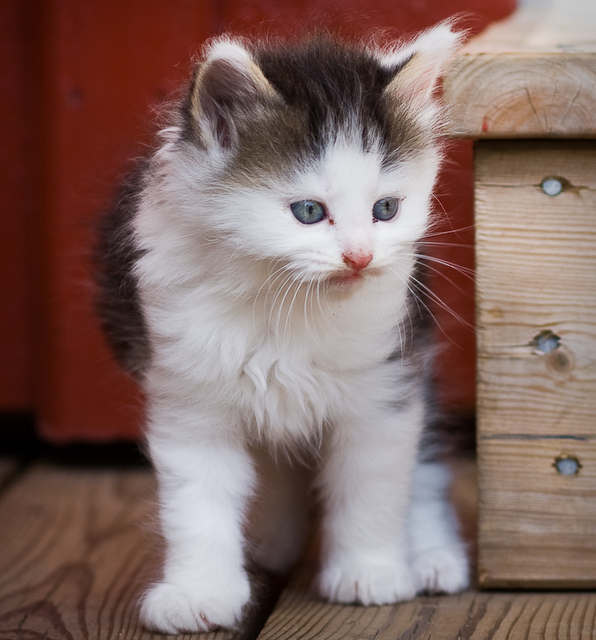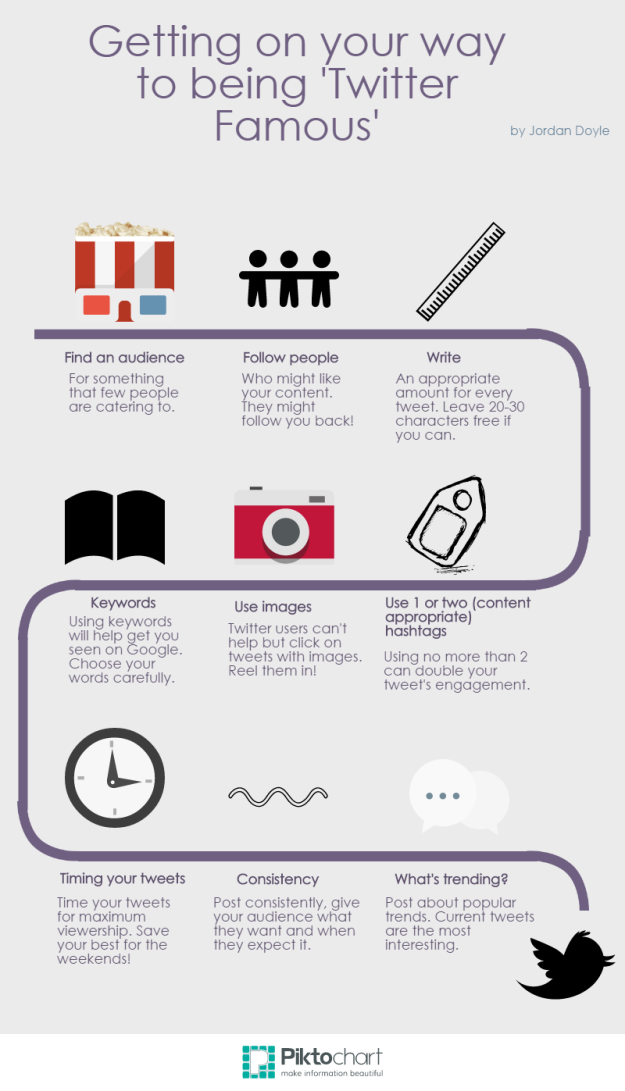A simple info-graphic I made with some handy tips for the aspiring Twitter account 🙂
Tag Archives: Content
Creative Commons: Protecting and sharing your content.

‘Creative Commons Poster – Take it!’ by Gwyneth Anne Bronwynne is licensed under CC BY-SA 2.0
In my last post I wrote about a clear abuse of the modern day uses of copyright protection in regards to a fan made video game project set in CCP’s owned World of Darkness IP.
It’s clear in that story and many others like it make it clear that there is something deeply archaic and wrong with the way that intellectual and creative properties are so restrictively protected in a society where content is so openly available. There is however, an alternative to this problematic protection method for this new, interconnected world of content creators, sharers and receivers: Creative Commons.
Creative Commons is a non-profit organisation that aims to expand the licenses available to aspiring and existing creators regarding legal rights and ownership. They have released to the public a number of copy-right licenses, free of charge. These allow creators to easily communicate what rights the license holder retains and what rights the consumer has regarding their use of said content.
These flexible licenses more effectively detail the content’s legal do’s and don’t’s and provide a wider range of rights for the consumer. ‘Some rights reserved’ licenses allow users to share, edit, morph, shape and in some cases, even commercialize content with no expressed permission from the creator as long as the user is accredited correctly. (These terms vary based on the creator’s preferences)
While these licenses are fantastic for low in-come creators seeking more specific protections for no cost. They excel at creating a less restrictive copyright system that opens up a range of different kinds of licenses that allow little to no commercial compensation and even external manipulation without worrying about getting express permission from the rights holders.
It’s baffling that Creative Commons exists only as a niche copyright protection system despite being so ideal for content in the information age. In a society where we are constantly challenging restriction and lack of freedom online and off, it’s surprising that restrictive permission culture still reigns most dominant.
As more aspiring content creators begin to adopt Creative Commons and future flexible permission systems, perhaps we’ll begin to see a more open world for content protection. For now, all we can do is continue to support Creative Commons in its endeavor and raise awareness for freedom in creative works, intellectual properties and franchises and a open, less controlled society in general.

‘Kitten’ by Ole Martin Bjørnli Günther is licensed under CC BY-NC 2.0
Here’s a picture of a kitten licensed via Creative Commons. Adorable.
The Guardian article summary: Movie piracy: threat to the future of films intensifies.

“piracy vs iTunes” by Will Lion is licensed under CC BY-NC-ND 2.0
The original article can be found here: http://www.theguardian.com/film/2014/jul/17/digital-piracy-film-online-counterfeit-dvds.
The article begins by saying that the movie industry consistently fails to convince many that piracy is theft and a crime to feel bad about. 30% of the UK partakes in piracy to some degree and that this theft costs audiovisual industries £500M annually. A common view as to why this is the case is that it’s a ‘victim-less crime.’ In particular it states that the independent film maker is most at harm to piracy due to lack of budget or income. Pre-sales often secure independent film finance and the rise of piracy is discouraging people to pay for content and this causes projects to collapse from lack of funding. The article contradicts itself by listing a number of hugely successful films released over the past year that received independent financing, but goes on to state that UK cinemas lose about £220M box office revenue due to piracy. Security is named to be an increasing focus in cinemas to halt this kind of content fraud. A quarter of a million jobs will be at risk if copyright infringement is left as it is by 2015 un the UK. Piracy is in fact a victim orientated crime it goes on to say. eOne Films representative lists a number of legal alternatives and states that piracy is inexcusable due to low cost services such as Netflix. Piracy is nothing, but “straightforward plagiarism for profit” and that you are putting money into the hands of a criminal whether pirating physical copies or online. The article concludes with a number of movements illustrating the rise of ISP’s and media industries aiming to combat piracy, but questions their effectiveness. The author stands on a very one-sided view of pirated content all throughout and makes their opinion very clear: Piracy is a threat to the movie industry.
Diana Lodderhose. (2014). Movie Piracy: threat to the future of films intensifies. Available: http://www.theguardian.com/film/2014/jul/17/digital-piracy-film-online-counterfeit-dvds. Last accessed 20/11/2014.
Using Pinterest to get employed.

“Pinterest Signs at Target” by Mike Mozart is licensed under CC BY 2.0
A quick look at how you can use Pinterest to get employers to notice.
Instagram’s use of Folksonomy, and using it to succeed.

“Instagram Logo Transparent” by Zenspa1 is licensed by CC BY2.0

“Cute grey kitten” by Nicolas Suzor is licensed under CC BY SA- 2.0.
Tips for creating a good piece of online content.

“social media” by Sean MacEntee is licensed under CC BY 2.0
It’s kind of ridiculous how easy it is for anybody to put something up on the internet. At the same time, it’s also kind of ridiculous how hard it is for someone to even begin to get their content seen by people online. With billions of voices all fighting to be heard through the same channels and platforms, the average user needs to bring a lot more to the table to avoid being caught in the current of online irrelevancy.
Being a part of a course at university dedicated to online content generation, I have researched and discovered many different methods and approaches you can take to make your voice heard. Naturally, I think it best to pass these tips on, and hopefully someone will be able to use some of what I say to better their own online endeavors.
AUDIENCE.
If you don’t know who you you’re writing or publishing material for, how can you be creating anything at all? Before you write anything, you need to know what it is you’re aiming to create, what is the purpose of this piece and WHO this piece is going to cater for. Is it a wide audience? Or a specific one? Do you cater to the average consumer? Or a niche one? You can’t create any kind of good content without keeping an audience in mind, because no one is going to read your piece if they don’t find your content compelling enough for them.
Typically specific, niche and specialized audiences will be easier to garner more interest. Targeting an audience with rare and unique content is much easier to do than cater to the thousands. Especially when it comes to marketing your product, as reaching out to a much more defined group is a much simpler task than advertising in a way that encompasses many groups of people.
PLATFORM.
Deciding what platform you wish to publish your content is just as an important decision as deciding what to write. A platform defines your content more than one might initially think, as every website and social network has their own traits, strengths and weaknesses. For example, creating a page on Facebook is a good way to get a quick established following due to it being typically a network for you and those that you already know. Whereas Twitter allows you to garner an audience much more easily with those that you don’t. Researching what platform is right for your content will be a major contributor regarding the success and popularity of your content.
Choose a platform that will make it easier for your targeted audience to access and consume. Your ideal platform is the one that makes consumption of your product as easy and accessible as possible.
CONSISTENCY.
Creating a Twitter with highly contrasting types of content and formality isn’t a good way to keep an audience. If half of the content you produce is highly professional and business based, and the other informal and linked to you more personally, you are going to quickly lose the audiences for both of the types of content you are producing. People are not going to stick around for one half of your work they like when they have to put up with the half that they don’t.
Establish your formality, tone, audience and themes early on and stick to them so that your audience knows exactly what your content is about. If you need or want to create “different” content, then on whatever platform you are using, create another account for it. You will have an easier time keeping a following if they are being given the content they were promised.
As well as this, make sure that your content is being delivered to your audience frequently. It goes without saying that no one is going to stick around and wait for that blog you promised them in a week’s time 6 months ago. Be consistent in both your content, and the frequency of its delivery.

